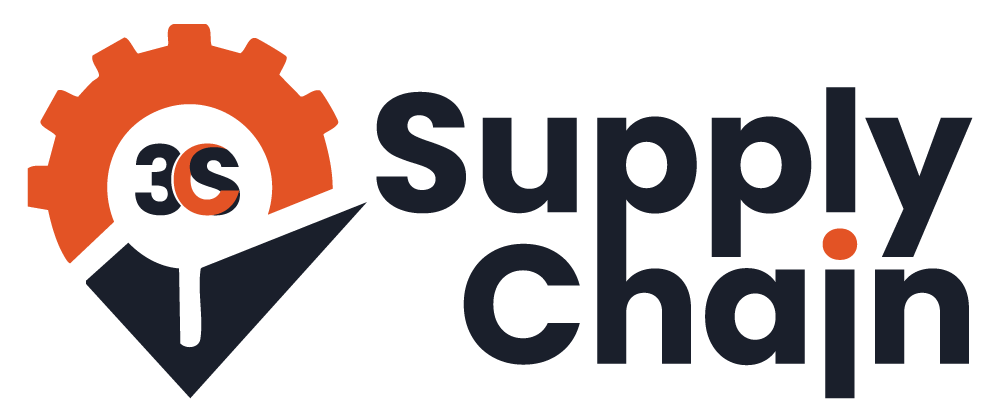Stock replenishment is the silent engine behind every seamless supply chain.
In a busy warehouse last week, I watched a team refill tools just before a peak shift. That same day, a shopkeeper quietly updated her shelves with top-selling items before the morning rush. A supplier I passed was preparing outgoing orders while a grocer loaded up before opening. These moments weren’t big, but they kept things moving—timely restocking avoids missed sales, production delays, and service disruptions.
Stock replenishment matters because it reduces uncertainty and supports uninterrupted operations. Whether you’re managing a small unit or a full-scale facility, having the right stock at the right time means less waste and better flow.
This guide will walk you through key practices, so you never fall behind on inventory again.
Let’s dive in.
Table of Contents
What Is Stock Replenishment?
Stock replenishment is the process of restoring inventory levels to meet ongoing demand. It ensures that essential products are available when and where they’re needed, helping avoid disruptions and delays across operations. Whether it’s a warehouse restocking tools or a store refilling daily-use goods, the goal is always the same—maintain flow, avoid shortages, and support seamless service.
Replenishment works best when planned with purpose. Rather than reacting to empty shelves, businesses use structured systems to identify when items need restocking and in what quantity. This avoids overstocking while preventing missed sales or paused work due to missing supplies. For example, daily-use items like packaging material, cleaning supplies, repair tools, or safety gear require frequent and timely replenishment.
The approach varies based on industry, but the principles remain consistent—track consumption patterns, predict needs, and maintain stock at optimal levels. Replenishment isn’t just a task; it’s a strategy that keeps operations smooth, consistent, and prepared for daily demands. When done right, it reduces waste, improves efficiency, and supports long-term reliability without drawing attention to itself.
Why Is Effective Stock Replenishment Important?
- Prevents Stockouts and Missed Opportunities
Timely replenishment ensures products are available when needed. Whether it’s a pharmacist ensuring consistent medicine supply or a florist keeping roses in stock, effective replenishment avoids missed sales and customer dissatisfaction. - Enhances Customer Experience
Keeping shelves full improves customer trust and satisfaction. When a baker maintains a steady flow of fresh bread or a tailor avoids fabric shortages, it reflects reliability and professionalism. - Reduces Wastage and Controls Cost
Replenishing smartly avoids overstock and spoilage. A grocer managing fruit supply efficiently or a chef maintaining only the needed spice inventory helps cut unnecessary expenses and boosts profit margins. - Maintains Operational Flow
Smooth business operations depend on the availability of essential items. A warehouse avoiding tool delays or a theater ensuring seat readiness benefits from uninterrupted service and production. - Supports Forecasting and Demand Planning
Replenishment aligned with accurate demand planning strengthens inventory control. When a gadget seller adjusts phone stock based on trends, or a hotel clerk updates room inventory to match bookings, the overall efficiency increases.
How Does Stock Replenishment Work?
- Starts with Demand Forecasting
Stock replenishment begins by understanding product demand. Businesses monitor consumption trends and sales patterns to predict what stock needs to be refilled and when. This ensures that inventory levels stay balanced without overstocking or running short. - Driven by Accurate Planning
Inventory replenishment relies heavily on planning systems that track product usage across timelines. Based on expected consumption rates, restocking schedules are generated to avoid operational delays and maintain seamless supply continuity. - Involves Storage Optimization
An efficient replenishment process considers available storage space. Products are reordered in quantities that align with current storage capacity, helping avoid overcrowding or underutilized stockrooms. This enhances accessibility and flow within inventory areas. - Triggered by Predefined Thresholds
Most systems use predefined reorder points. When an item reaches a minimum stock level, it automatically triggers a purchase order or restocking task. This threshold-based method ensures consistent product availability across all operations. - Enabled Through Monitoring Tools
Continuous monitoring of stock levels, supplier lead times, and usage rates plays a central role in replenishment. Tools like barcode systems or inventory software help maintain accuracy, reduce manual errors, and alert teams to low stock before disruption occurs. - Supports Operational Stability
A well-managed stock replenishment process prevents last-minute shortages, especially during peak demand. It creates a buffer against supply chain risks and maintains product readiness across warehouses, stores, and distribution points. - Links Procurement with Real-Time Needs
Inventory replenishment bridges the gap between procurement cycles and day-to-day consumption. It ensures that ordering decisions are timely, budget-conscious, and based on actual stock movement rather than guesswork.
What are the methods or principles of stock replenishment?
- Safety Stock Management
Keeping a buffer inventory helps reduce the risk of stockouts. It allows operations to continue smoothly even when there are unexpected delays or spikes in demand. This principle supports stability by providing a cushion that absorbs supply fluctuations without interrupting workflows. - Reorder Point Strategy
This method sets a specific inventory level at which replenishment must be triggered. By closely tracking usage patterns and lead times, it ensures that stock is reordered before depletion. This system helps prevent urgent procurement and supports continuous availability. - Demand-Driven Replenishment
Inventory is refilled based on actual or forecasted demand, making the process more responsive to market changes. It avoids overstocking of slow-moving items while ensuring high-demand products are available. This approach aligns stock levels with consumption trends. - Periodic Review System
Replenishment occurs at fixed intervals, based on reviews of current inventory levels. This system is particularly useful for items with predictable usage patterns. It simplifies planning and ensures inventory checks become a routine process that avoids neglect. - Just-in-Time Replenishment
This principle focuses on receiving goods only as they are needed, minimizing storage costs. It requires strong coordination with suppliers and efficient internal processes. When implemented well, it reduces waste and keeps inventory lean without compromising availability.
What are the best practices for stock replenishment?
- Regular Stock Level Monitoring Effective stock replenishment begins with regularly monitoring inventory levels. Tracking product movement helps avoid overstocking or running out of essential items. This consistent visibility enables timely decisions that maintain supply chain efficiency and customer satisfaction.
- Aligning Restocking Frequency with Demand Patterns Businesses benefit from matching restock schedules to demand cycles. High-demand periods require shorter replenishment intervals, while low-demand times allow extended gaps. Adapting to these patterns keeps operations responsive and avoids unnecessary holding costs.
- Supplier Coordination for Timely Deliveries Working closely with suppliers ensures reliable restocking timelines. Clear communication about lead times, delivery schedules, and inventory needs helps reduce delays and supports uninterrupted service delivery across operations.
- Categorizing Stock Based on Criticality Segmenting stock by importance—such as critical, essential, and non-essential items—helps prioritize replenishment. Critical supplies should be reviewed and reordered more frequently, ensuring production or service continuity under all circumstances.
- Automating Reorder Points with Inventory Software Using inventory management systems to automate reorder points improves accuracy and reduces manual errors. These tools analyze usage data and notify when restocking is due, keeping inventory at optimal levels with minimal intervention.
- Cross-Functional Inventory Reviews Collaborating across departments allows better insights into actual usage and future needs. Involving procurement, warehouse, sales, and operations teams in stock reviews helps fine-tune replenishment practices based on real consumption.
- Safety Stock Allocation for High-Risk Items Maintaining a safety buffer for items with unpredictable demand or longer lead times minimizes the impact of sudden spikes or supply chain disruptions. This practice supports service continuity, especially for critical operations.
- Forecast-Based Replenishment Planning Integrating demand forecasts into replenishment planning aligns stock availability with market expectations. Accurate forecasting reduces overordering, enhances cash flow, and keeps the inventory system lean and efficient.
- Centralized Stock Visibility Across Locations Maintaining centralized visibility of stock across all warehouses or branches ensures better allocation and reduces redundant restocking. This approach avoids excess buildup in one location while another runs short.
- Periodic Audit of Replenishment Performance Regularly reviewing replenishment performance metrics like fill rates, lead time variances, and stock turnover rates identifies gaps in current practices. These audits help refine the process and ensure long-term operational stability.
What are some stock replenishment tips?
- Choose Reliable Suppliers
Consistent MRO inventory management starts with dependable vendors. Working with trusted suppliers ensures that restocking doesn’t disrupt operations. Whether it’s mechanical parts or cleaning tools, supply consistency helps maintain operational flow without last-minute delays. - Use Strategic Reordering
Stock replenishment is smoother when reorders are based on actual usage and forecasted demand. Monitoring movement of parts or consumables allows teams to reorder just in time, avoiding excess inventory while preventing shortages in critical areas. - Improve Inventory Visibility
Keeping a clear view of inventory levels is essential. When teams can quickly identify which items are running low—whether it’s lubricants, tools, or gloves—it becomes easier to plan replenishment without guesswork or disruptions in service. - Automate Where Possible
Automation simplifies stock control by tracking inventory levels and triggering reorders at predefined thresholds. For fast-moving MRO items, automated systems reduce the burden of manual checks and support uninterrupted supply for operations. - Plan Holistically
Replenishment isn’t just about individual items—it requires a broader view. Reviewing MRO inventory across departments ensures nothing is overlooked. Coordinated planning helps manage budget, storage space, and supply flow more efficiently.
Conclusion
Stock replenishment is not just a task—it’s a rhythm that keeps operations in sync. Whether it’s ensuring shelves are filled in time or making sure critical items are never out of reach, the impact is always visible. A well-managed replenishment cycle reduces gaps, prevents last-minute rushes, and supports a smoother workflow across departments.
It’s about precision. Reordering the right items, at the right time, and in the right quantity reduces excess while protecting against shortages. This balance doesn’t happen by accident; it comes from consistent monitoring, proper planning, and a clear understanding of demand patterns.
When replenishment is aligned with business needs, it minimizes disruption. From retail and healthcare to manufacturing and logistics, steady inventory flow helps maintain service levels without unnecessary buildup. It ensures that people have what they need—without delay and without waste.
As organizations grow, refining replenishment practices becomes essential. Small adjustments in how stock levels are tracked or how reorder points are set can lead to noticeable gains in efficiency and cost control. That’s where attention to detail matters most.
Stock replenishment, when handled well, supports more than just inventory—it supports performance, reliability, and growth. It’s not about doing more; it’s about doing it better.

